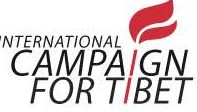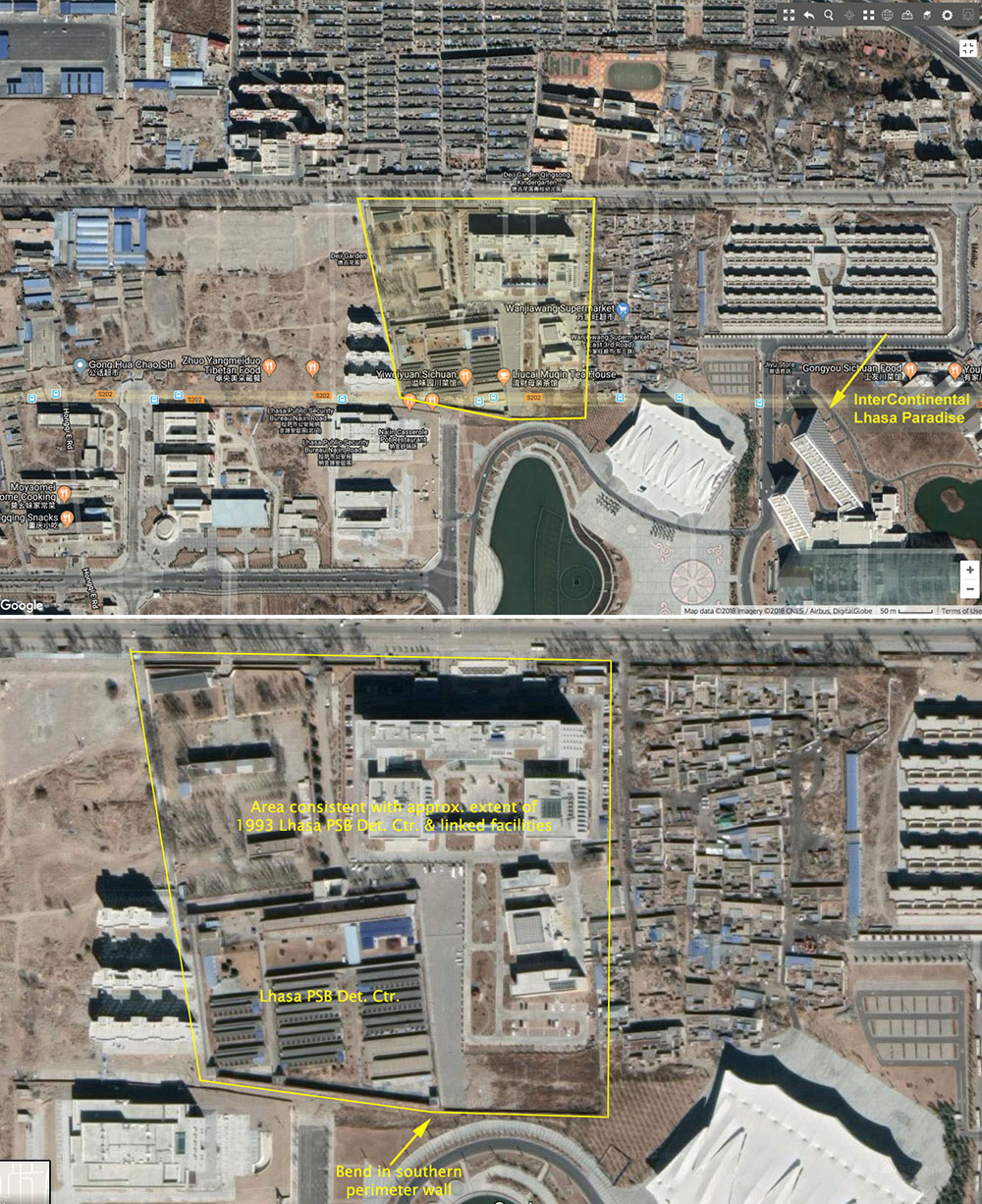 Recent satellite imagery showing the dramatic modernisation and infrastructure boom in Lhasa city has been analysed in a new report by the International Campaign for Tibet (ICT). The images reveal an extravagant luxury hotel adjacent to one of China’s most notorious “black site” prison facilities, Gutsa, which also appears to have undergone renovations to increase its holding capacity.The Google earth images analysed in ICT’s report China’s Control State in Lhasa do not tag the actual function of the buildings within the detention facility but mark them as supermarkets or tea shops—which ICT says is in keeping with China’s long standing practice of hiding the presence of such prisons known for their brutal interrogation methods and torture devices.
Recent satellite imagery showing the dramatic modernisation and infrastructure boom in Lhasa city has been analysed in a new report by the International Campaign for Tibet (ICT). The images reveal an extravagant luxury hotel adjacent to one of China’s most notorious “black site” prison facilities, Gutsa, which also appears to have undergone renovations to increase its holding capacity.The Google earth images analysed in ICT’s report China’s Control State in Lhasa do not tag the actual function of the buildings within the detention facility but mark them as supermarkets or tea shops—which ICT says is in keeping with China’s long standing practice of hiding the presence of such prisons known for their brutal interrogation methods and torture devices.
 Gutsa, officially known as the Lhasa Public Security Bureau Detention Centre, serves as the initial detention centre for thousands of Tibetans imprisoned over the years for involvement in peaceful protests, or such actions as celebrating His Holiness the Dalai Lama’s birthday. “Reports from former prisoners held there include torture with electric batons, sometimes almost to death, attacks by dogs and beating and shock treatment while the prisoner is suspended naked from a ceiling,” says the ICT report,relating first-person accounts of torture from several people, including monks and nuns who were imprisoned or abducted and held at Gutsa.
Gutsa, officially known as the Lhasa Public Security Bureau Detention Centre, serves as the initial detention centre for thousands of Tibetans imprisoned over the years for involvement in peaceful protests, or such actions as celebrating His Holiness the Dalai Lama’s birthday. “Reports from former prisoners held there include torture with electric batons, sometimes almost to death, attacks by dogs and beating and shock treatment while the prisoner is suspended naked from a ceiling,” says the ICT report,relating first-person accounts of torture from several people, including monks and nuns who were imprisoned or abducted and held at Gutsa.
The Chinese government has denied the existence of such facilities and claim they hold no political prisoners, such statements are widely regarded as being part of their efforts to boost international investment and tourism in the Tibet region. Now the luxury five-star British Inter Continental Lhasa Paradise hotel, with its massive pyramidal structures, towers over Gutsa, while several other big hospitality names have opened their doors to wealthy guests visiting China-occupied Tibet, presumably unaware of what is happening in the nearby prisons.
“The boom in tourism in Lhasa today coexists with a security crackdown of unprecedented depth and scope,” says the report, giving several other examples of the Chinese government’s systematic securitisation of Tibet, including infrastructure projects with roads intended to be wide enough to serve as runways for military planes.
Another addition is the formation of “neighbourhood committees” with the primary purpose of gathering and storing information, to be used in a centrally-coordinated system, as well as tracking of individuals who belong to “special groups”. This includes political prisoners, nuns, and monks who are not residents in a monastery or nunnery and the “returning people”—Tibetans who have returned from India are targeted as they are perceived to have come under the influence of His Holiness the Dalai Lama and the Tibetan exile diaspora, the report warns.
*ICT is based in Washington DC and works to promote human rights and democratic freedoms for the people of Tibet.




 Print
Print Email
Email